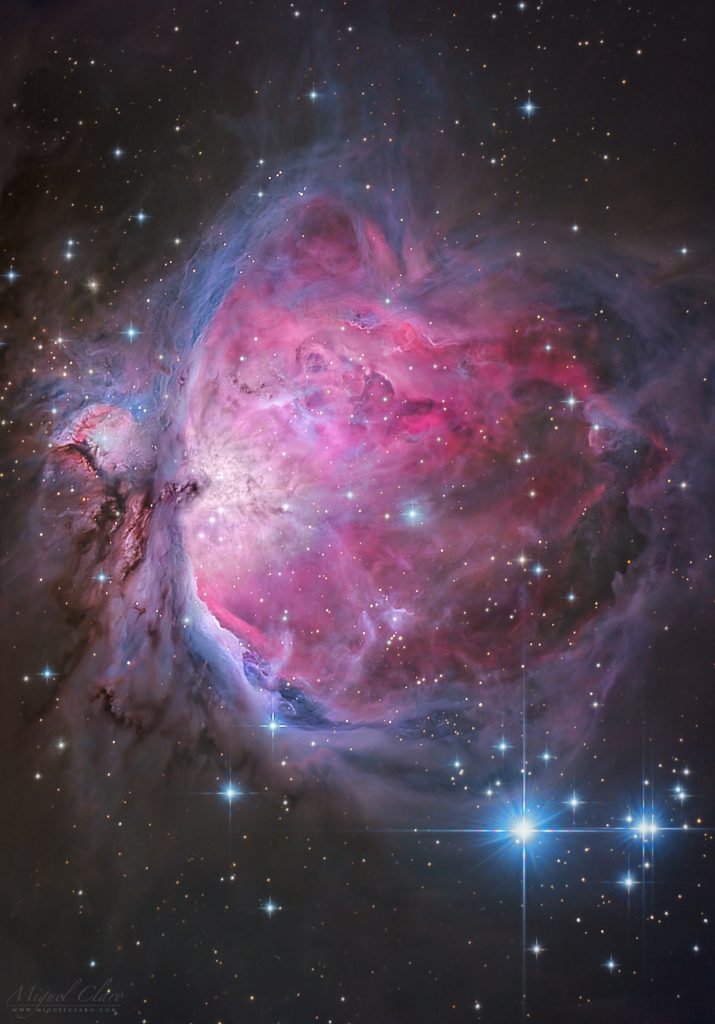How Are Stars Formed? (Part3)
Jupiter is a star that failed to form
This beautiful planet in our Solar System was born 5 billion years ago. If Jupiter, which is composed largely of hydrogen like the Sun, were larger, fusion would begin and it could become a real star. However, the temperature in its center was not high enough. For this reason, instead of becoming a star, it became a large gas giant. So what's the difference between brown dwarfs and gas giants? According to the basic definitions, it is stated that a brown dwarf can be at least 13 and at most 90 times the size of the planet Jupiter. For this reason, the distinction between "planet", "star" and "brown dwarf" can be easily made by looking at these dimensions.
Structure and components of Jupiter. Source:Britannica
Star Forming Regions
We have said before that stars convert hydrogen into helium throughout their lives, thereby obtaining energy. However, this situation does not continue forever. After a star grows, it becomes either a white dwarf, a neutron star or a black hole, depending on its mass (we will talk about the evolution of stars in our next astrophysics article series). But all stars become red supergiants before becoming one of these. Red supergiants are very large and therefore they release gas into space with internal pressure and high temperature. With this gas emission, the foundation of nebulae is laid. The gases released are quite large and fast. Later, the gases come closer and form a cloud. The temperature of the cloud formed is more than 15000 °C. This temperature and various pressures combine with hydrogen and other heavy elements and initiate the fusion reaction. This fusion reaction is the first foundations of a new star.
The structure formed by the released gases can be quite large. Only one arm of the Eagle Nebula seen in the picture is 7 light years long. (Source:NASA)
There are many star birth regions in our galaxy, but the most famous is the Orion Nebula. This nebula appears below a band of three stars in the constellation Orion and is about 15,000 light-years away.
Newly born stars in the Orion Nebula increase the temperature of the clouds around them, causing them to shine. Such shining clouds are called 'emission nebula' because they emit heat and light. (Source: Space.com)
As can be seen, the release of gas from dying stars allows the birth of new stars. So, so to speak, stars can give birth to children after they die. It is also clearly a star before it forms a nebula. So where did the first nebulae in the universe come from? Were nebulae or stars the first to form right after the Big Bang?
Star Formation in the Big Bang
When the Big Bang occurred, an area that we can call space was formed, and the hydrogen, helium and lithium that emerged during this formation were collected in certain areas and formed the first stars. With this information, it is quite possible that a question will come to your mind: looking at the astronomy information we have, not only hydrogen and helium are sufficient for the Sun and stars smaller than the Sun to form, but heavier elements must also be present. So how did the first stars form only from hydrogen and helium? can he come?
First of all, our theories of star formation actually say that a star cannot exist without heavy elements. The reason for this is that without 'cooling' elements, the gas clouds that need to collapse to form stars become too hot as they collapse, and this heat prevents the cloud from collapsing and causes it to expand.
As for the answer to the question, we need to visualize the period when the universe was still small and quite cramped. During these periods, there were clouds of gas so dense that hydrogen and helium could combine to form stars. Massive stars, which are unlikely to form today, could be born in these gas clouds. In other words, the conditions of the universe at that time could create situations that are not possible today. Thus, giant primitive stars with more than 200 times the mass of the Sun had already begun to shine from some hydrogen and helium. You can already guess the rest. Heavy elements began to form inside these giant stars, we call this stellar nucleosynthesis. When these stars reached the end of their lives, they scattered all their elements into space with strong stellar winds and eventually massive supernova explosions. So new stars continued to form in huge nebulae.
Stars are perhaps the most magnificent and extraordinary beings in the universe. We have much more to learn from them. In the second part of our Stellar Astrophysics series, we will touch on the classification and evolution of stars and go on a wonderful journey full of black holes and neutron stars. Until then, stay sciencey!
Heart Nebula. (Source:NASA)
Red Giant dies leaving a White Dwarf
Source :
Önceki Yazılarımı Okumak İçin (To Read My Previous Articles):
-----@BULB Official-----
👉Takip Profil Linki (Follow Profile Link)👈
https://www.bulbapp.io/u/BhLadUxRpQdhHxBZAazFeVEPU7SVtP4qRxpcCjLFTpKz/shadoweysel



















![[ℕ𝕖𝕧𝕖𝕣] 𝕊𝕖𝕝𝕝 𝕐𝕠𝕦𝕣 𝔹𝕚𝕥𝕔𝕠𝕚𝕟 - And Now What.... Pray To The God Of Hopium?](https://cdn.bulbapp.io/frontend/images/79e7827b-c644-4853-b048-a9601a8a8da7/1)






















































